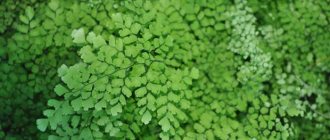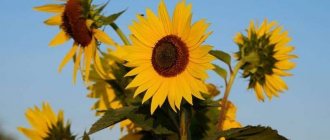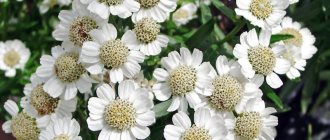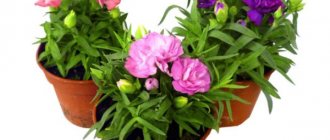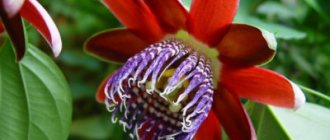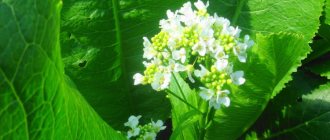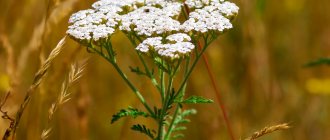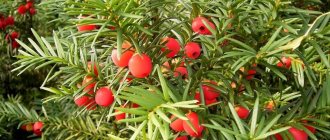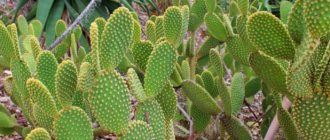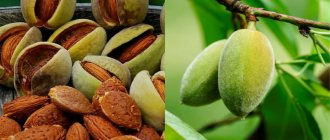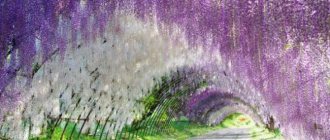Majestic elms decorate the streets of many cities. A tree of the elm genus called Ulmus was widely known in ancient times due to its unusual appearance and unpretentiousness to soil conditions, but much has changed since then. As a result of significant deterioration of the ecological situation and a number of tree diseases, the number of elms in nature has decreased significantly. After reading this article, you will get a complete picture of what an elm tree looks like and learn about the optimal conditions for growth and care. This topic is quite relevant for the reason that today there are about 30 species of these trees growing in the world, a minority of which are found in Russia and countries that were formerly part of the USSR.
origin of name
The elm tree, the photo and description of which is presented in this article, is part of the elm genus. The modern name comes from the Celtic name “elm”, which later spread throughout the world, having undergone minor changes. Thus, in German, these trees are known as “Ulme”, and in Russia, each individual type of elm received its own name.
It is noteworthy that the most famous of them is the elm. The word literally translates as “flexible rod,” which fully corresponds to the structure of this tree.
History of smooth elm
Smooth elm belongs to the elm family. This is a tall tree with a wide spreading crown. Its name comes from the Celtic "elm", which means "elm". In Russian, this word was interpreted as a “flexible rod”, which was previously used to make sleighs and carts. The wood of this tree has long been famous for its flexibility, therefore it was used in construction, as well as for the manufacture of weapons (clubs and shields), and covered the hulls of ships. In Rus', kitchen utensils, knitting needles, arcs, shafts and much more were made from elm.
Elm bast was used to produce bast, and the bark was used for tanning leather. In Ancient Greece, elm leaves and young shoots were used as livestock feed. Elm bark was used in folk medicine. For fever and colds, a tincture was made from the bark of elm and willow, with the addition of birch buds. This infusion contains a lot of tannins and mucus, which have an effective effect on the human body at elevated temperatures, burns and skin dermatitis.
Mucilages are the same as modern polysaccharides. Today in medicine they serve as enveloping substances. Elm seeds are no less useful. They contain about 30% non-drying oils, fiber, tannins and a large amount of proteins. This makes the seeds a useful feed for livestock: cows and pigs. In May, food is prepared from elm branches, since during this period they are rich in proteins, fiber and nitrogen-free substances.
Elm family
Elm (Ulmus) is a genus of large trees and shrubs, most of which shed their leaves for the winter. The best-known species are large trees with rough, thick bark with deep fissures running through it. Cork growths can develop on the branches of most southern trees.
The root system is very strong. Individual roots can go so deep that they often reach the level of groundwater flow, and the mass lies in close proximity to the surface. Knowing what an elm looks like (photos of the tree and leaves are presented in this article), you can easily distinguish it from other trees in nature.
The leaves have a pointed shape with many denticles and falling stipules. The flowers are rather inconspicuous. Depending on the type of elm, they can be collected in bunches or capitate inflorescences. Pollination occurs mainly due to wind. As a result of a long process, a single-seeded fruit in a thin shell is set on the tree, often additionally protected by a lionfish.
How to plant and grow small-leaved elm
This is a fairly unpretentious plant, which is not at all difficult to get into the garden.
In order to grow a tree you need:
- Plant the seeds in fertile, loose soil in a small container. At the same time, you should not deepen them too much; a few millimeters of depth is enough;
- Be sure to add lime to the soil to enrich the soil with phosphorus, calcium, nitrogen and magnesium;
- In the first few weeks after planting, it is important to maintain stable soil moisture. To do this, it is recommended to cover the container with polyethylene and do not forget about watering;
- The first shoots will appear in a week.
However, it is not at all necessary to grow it from seeds; you can use the cutting method. To do this, it is recommended to cut the cuttings in May and, after treating them with growth stimulants, place them in water to form roots.
Let's watch an interesting video about how to grow a kargach tree:
Elm (tree): description
Smooth elm (common elm) is a deciduous tree that produces dense clusters of small green inflorescences as the weather warms. It is worth noting that the flower buds are much larger in size than the leaf buds and are brownish-brown shoots covered with a fairly thin glossy shell, which is subsequently covered with a network of cracks.
In most cases, the elm does not exceed 35 m in height and 1 m in diameter. The crown is dense, wide, cylindrical. The photo gives only an approximate idea of what an elm tree looks like, however, after familiarizing yourself with the image, you can easily distinguish the elm from other trees in the forest or on city alleys.
Its leaves rarely exceed 15 cm in length. Their rich dark green color disappears with the onset of cold weather, and they acquire a yellow-brown tint. While the tree is in the active growth stage, its bark is quite thin and smooth, but the older the tree is, the rougher it becomes. Once the elm has fully matured, the rich gray-brown hue will be covered with many deep cracks.
Description of the genus
Elm (from Latin ulmus laevis) is compared to oak in its majesty and power. This is a relict species, the lifespan of which trees goes back several centuries. The growing area of elm species is extensive; in Russia they are found in several subspecies; in addition, they can be seen in North America and Europe.
This genus of trees is found both as single representatives and in mixed plantings. They also feel quite good in poor soils, but mostly grow on fertile lands. This type of tree grows upward even when there is not enough sun. At the same time, the growth rate of elm is very high. The growth per year is about 50 cm in height, and in trunk girth up to 0.3 meters.
A mature elm can reach 40 meters, but there are also species that resemble shrubs. The surface of the bark of a young elm is without roughness, light brown in color, and over time it becomes covered with vertical grooves. The root system of the tree is powerful, the roots penetrate to a depth of 30 meters with a trunk with a girth of 1.5 meters. But some species have their roots spread out rather than deep, covering vast areas.
Elm leaves differ significantly from other species in their elongated oval shape and jagged edges. Leaf size is from 4 to 20 centimeters. They are located alternately on the branches and are attached to them with short cuttings. In autumn they change color from green to red-brown and the crown quickly thins out.
The tree blooms in the spring, before it becomes overgrown with leaves. The inflorescences are small, yellow in color. Elm seeds are small winged nuts. They ripen in the last days of May, and the wind scatters them throughout the surrounding area. If the conditions are right, they can germinate within a few days.
Advantages of elm trees
Elm and ash trees easily get along even on difficult types of soil. They have excellent frost resistance, due to which they practically do not suffer even from severe frosts, and tolerate drought and dry air well. They can grow in conditions of highly salinized soil, but the fastest growth is observed if these trees grow in deep and loose soils.
Due to the fact that they are xerophytes, trees are extremely resistant to drought. Elms, along with maple, are indispensable in steppe afforestation. For example, in shelterbelt conditions they are used as the main accompanying species for a tree such as oak.
It is noteworthy that elm is successfully used in folk medicine as a basis for various tinctures. At the same time, the plain elm (birch bark) has the greatest medicinal value.
Application
Landscape design
Decorative crown shape, early flowering. Decorative durability 40–50 years. It has long been used as a park species, for lining roads, creating hedges and protective plantings.
Medicinal use
Medicinal properties.
There is almost no data on the use of elm in medicine in reference books of medicinal plants. However, a study of the chemical composition of elm leaves and bark showed a high content of biologically active substances that have a therapeutic effect on the human body. Vitamin C, P-active compounds (catechin, rutin, campherol, leukoanthocyanins), phenol-carboxylic acids and other substances were found in the leaves. The bark is rich in tannins and leukoanthocyanins, which provide astringent, anti-inflammatory, antimicrobial and wound-healing properties.
Elm bark decoction cm. l. crushed bark, pour 0.5 liters of boiling water, keep in a boiling water bath for 15 minutes, cool at room temperature for 45 minutes, strain, squeeze out the remainder and bring with boiled water to the original volume. Drink a decoction of 1/4-1/2 cup 3-4 times a day 20 minutes before meals for peptic ulcers of the stomach and duodenum, including those of dysentery origin. A decoction helps with diarrhea. Externally, lotions and compresses of bark decoction can be used for burns, rashes, eczema and other skin diseases.
Concentrated decoction for external use cm. l. pour crushed hornbeam elm bark with 2 cups of boiling water, simmer over low heat until the volume is reduced by half, strain. It is recommended to use the finished decoction in the form of lotions 4-5 times a day for purulent and long-healing wounds, burns, rashes, and eczema.
A decoction of the bark can also be prepared from other types of elm. The use of elm leaves requires further research.
Greening the city
When carrying out landscaping in cities, elms are planted as single trees (tapeworms) or in groups of 5-10 trees. In urban conditions, it develops a powerful spreading crown, which visually enlarges an already rather large tree.
In the spring (April - May), the tree attracts attention with its many flowers, the color of which is dominated by brown shades. In summer, elm boasts dark green leaves that effectively set off the light skins of the fruit, and in autumn it has a golden-yellow crown.
Elm is a tree that easily tolerates pruning and can be used as a hedge. Since about 12 species of elms grow in the territories of the post-Soviet space, within one city you can find several different forms of it, differing from each other not only in color, but also in the shape of the leaves.
What a smooth elm tree looks like: photo
Smooth elm is a large-leaved tree with a straight, thick trunk, about 1.5 m in diameter. PHOTO
The bark of young individuals is smooth, while that of older trees is rough, dark brown in color, and peels off in thin sheets.
Young shoots are thin, fluffy, smooth, light brown.
The flowers are small, inconspicuous, brown, with purple stamens. They bloom from March to April until the leaves appear.
The leaves of the elm tree are large, oblong, alternate, pointed, up to 12 cm long. Smooth, dark green above, hairy below, light green, on short petioles. In autumn they turn yellow and acquire purple tones.
The fruits are rounded lionfish, with a nut in the center and a notch at the top of the wing. Collected in bunches, on long stalks. Ripen in May-June. The tree begins to bear fruit at the age of 7-8 years. Abundantly, annually.
The root system is powerful, the roots lie on the surface of the soil or go deep into the ground. Smooth elm is frost-resistant, tolerates temperatures down to -28 degrees. In harsh winters, the ends of the plant's shoots freeze.
Prefers fertile, well-moistened soil, without compaction and excessive salinity. It loves moisture and easily tolerates floods. Drought resistant. Grows quickly. The annual growth is up to 50 cm in height and up to 30 cm in width. You can see what an elm tree looks like on the page in the photo gallery below.
Root system
The elm root system is so powerful that it can successfully compete even with oak roots. Not only the main taproot, through which the tree receives its main supply of nutrients, penetrates into the soil to a sufficiently great depth, but also the lateral ones. It is this property that makes it possible to ensure significant stability of the tree even in strong winds.
For example, when planting on shelterbelts, they restrain the main gusts of wind, allowing you to obtain full-fledged crop yields, the ripened seeds of which practically do not fall to the ground.
Features of elms
Elm is a tree that, when planted on fertile soil, spreads its roots over a considerable distance, due to which they sometimes reach the level of groundwater, providing the plant with nutrients even in conditions of severe drought.
Elm propagates by seeds, which must be planted in the soil immediately after ripening (late May). If planting is delayed for any reason, the seeds lose their quality and are no longer suitable for sowing. With sufficient soil moisture, the germination process takes no more than 1 week.
Young trees grow in all directions and resemble bushes in their shape. This happens because at the initial stage of growth they lack a vertical shoot from which the trunk is formed. However, with age, its shape evens out, and the bush becomes more and more like a tree.
It is noteworthy that a fully formed tree begins to bear fruit 10-12 years after germination.
Planting a tree and caring for it
It is very easy to grow elm in your garden due to the high germination of seeds in the first few days after ripening. Every day the ability to germinate is lost, so you need to not miss the moment when the seeds fall from the tree.
Basic tips for growing elm:
- It is recommended to treat the collected seeds with a fungicidal solution before sowing - this increases the likelihood that future shoots will be healthy and viable. The seeds are wrapped in damp gauze or cotton wool for germination; when sprouts appear after 2-3 days, they are transferred to a container with soil. Ideally, if chernozem is used for planting, you can mix humus with leaf soil.
- Sprouted seeds are planted to a depth of 1-2 cm; a distance of at least 25 cm should be maintained between adjacent sprouts. You must constantly ensure that the soil does not dry out; to maintain moisture, the soil is mulched with moss or hay.
- After 10-14 days, the young trees will have taken root sufficiently and will be able to extract moisture from the deeper layers of the soil, so the covering material can be removed. Plants are placed on the sunny side, and in calm weather they are taken out to the balcony or garden. By next spring, the young trees will reach a height of 20-25 cm and can be planted in open ground.
- Until the trees get stronger, they need to be protected from strong winds and covered with agrofibre for the winter to protect them from frost and rodents. If the elm is planted in poor soil, it needs to be fertilized with organic fertilizers for the first few years. The soil around the tree must be periodically loosened and its moisture monitored.
- For the first 2-3 years, the crown of the tree is not pruned so that it grows as much as possible. Later, pruning can be done, giving the elm an aesthetic appearance.
- If pests or fungal diseases are detected on the bark and leaves, insecticidal and fungicidal treatment is carried out with products that are sold in agricultural stores. Due to the fact that young trees have smoother bark, it is much easier to cure them of fungus and insect pests.
Planting elms in garden plots is an excellent way of landscaping and strengthening the soil, preventing it from slipping and weathering. The only thing that needs to be taken into account when planting is the type of elm and its future size, since tall and spreading trees are not suitable for small areas.
Elm tree: photo and description
Although the genus Ulmus includes about 30 species of trees, the most famous of them are the following.
- Common elm (Ulmus laevis) differs from other species in its very elastic and flexible wood, which is practically impossible to polish. Widely used in the manufacture of durable impact-resistant products.
- Mountain elm, or rough elm (Ulmus glabra) is very similar to elm in flexibility, but its wood is much stronger. Unlike ordinary elm, it is quite demanding on the soil, does not tolerate drought well and is damaged by frost.
- Elm (Ulmus laciniata).
- Birch bark (Ulmus carpinifolia), the main positive quality of which is the ability to retain the shape created during the bending process for a long time. Most often it grows in open areas.
- Valley elm (Ulmus japonka) stands out among other representatives of the genus with its height, often exceeding 40 m. In arid areas it grows crooked and rarely exceeds a height of 12-15 m. It tolerates drought well.
- Pristovet vista (Ulmus pumila) is widely used in landscaping and protective afforestation throughout the world.
- Elm (Ulmus androsowit) is a fairly branched tree with a wide crown that provides dense shade. Thanks to these qualities, it has become one of the most popular trees in the south.
- Smooth elm is a tree (photo presented in this article) that is most often found in the North Caucasus, Transbaikalia and the Far East.
Features of growth and care
Elm is a tree whose seedlings grow quite quickly, increasing in height by more than 1 m annually.
The process of intensive growth continues for 13-15 years, after which it begins to gradually slow down. After the tree reaches the half-century mark, practically no increase in height is observed, and at the age of 100 years it stops completely.
Elm wood is strong and quite elastic, relatively light, due to which it is widely used in the furniture industry.
Pure elm groves are extremely rare. As a rule, they include a large number of different trees.
Elm forests
Elm is a tree whose photo can be taken on the alleys of any city. Regardless of its species, it grows best in fertile soil with good drainage. Two-story elm forests with small admixtures of other trees are widespread from Europe to Asia.
In Russia, the total length of such forests is about 500,000 hectares, but unlike European elm forests, they are not only single-tiered, but also include a large number of different trees.
Elm forests have high industrial value. Felling in them is most often carried out during the period of fruit ripening, which ensures constant replenishment of new trees.
Diseases
Today, there are many diseases that affect elm trees, but the most widespread among them is Dutch disease. It is a fungus transmitted by the elm bark beetle. Its spores penetrate deep into the wood structure, first weakening and then completely destroying the tree. After infection, the leaves on young shoots begin to turn yellow and fall off.
Dutch disease poses the greatest threat to elm forests, causing them to dry out. For example, in the last century, most of all elms in England died from this disease, and now the disease has spread throughout the entire range of elm trees. The most susceptible to this disease are smooth elm and birch bark, and the most resistant is small-leaved elm.
Cuttings, planting and growing elm
The best time to plant cuttings is the first summer months. To harvest cuttings, take well-developed annual shoots 0.6–0.8 mm thick. Several formed buds are left on the shoot. Using a sharp razor, cut the branch obliquely under the lower bud. The top cut is made evenly.
The soil in the school is disinfected by steaming or spilled with any suitable fungicide. Fill with a complete complex mineral fertilizer with a minimum nitrogen content.
Before planting, the lower cut of the cutting is dipped in the Kornevin preparation, the excess powder is shaken off and carefully placed at the bottom of the groove. The cuttings are covered with a nutrient substrate so that 2–3 lower buds are underground. If necessary, the cuttings are rooted in water and planted after the root buds appear.
Before roots appear, it is necessary to constantly monitor the soil moisture. After watering, the tree with cuttings is loosened to increase gas exchange at the site of the developing root system. In dry, hot weather, the bed is mulched with peat, rotted sawdust or hay dust.
After leaves and new shoots appear on the rooted cuttings, we can consider that the first stage of planting and growing the elm is completed.
How to care for an elm seedling
At first, plantings are watered abundantly. When the elm seedlings grow new branches, reduce watering. On waterlogged soils, young elms can be harmed by Dutch disease. This is a fungal disease transmitted by the bark beetle. Affected trees dry out in just a few weeks.
To prevent infection, the following measures are taken:
- treat the plantings with insecticides to destroy the bark beetle;
- Dried branches of diseased seedlings are cut off;
- the cut areas are coated with a 5% solution of copper sulfate;
- The entire plantation is sprayed once every two weeks with a tank mixture of foliar fertilizer, antifungal agent and insecticide.
All plant debris, including branch cuttings and stumps, must be removed from the site and burned.
In autumn, young elm seedlings are inspected and the strongest ones are selected. It's time to plant them in a permanent place.
Elm is a shade-tolerant plant, but young trees may die if there is insufficient light, so open sunny places are chosen for planting and growing elm.
At the selected location, dig a hole measuring 50*50 cm. Drainage is laid at the bottom. Broken brick, expanded clay, and crushed stone are suitable. Large fractions are covered with a layer of river sand.
If the soil on the site is fertile, add soil selected from the pit.:
- 1 tablespoon each of superphosphate and potassium salt;
- 1 cup wood ash;
- several tablets of Glyokladin or Trichodermin to prevent white rot.
For poor and depleted soils, the amount of fertilizer is doubled and an additional bucket of compost or humus is added to each tree.
In the southern regions, elm seedlings are transplanted in the fall. Long warm autumns and mild winters allow them to overwinter without problems. In places with a more severe climate, elm seedlings are buried in a trench for the winter and planted in the spring.
